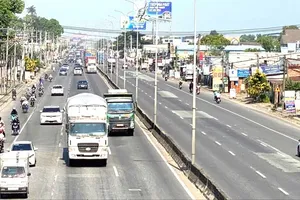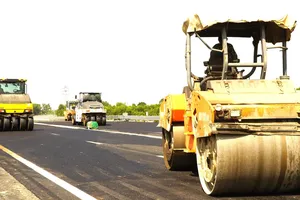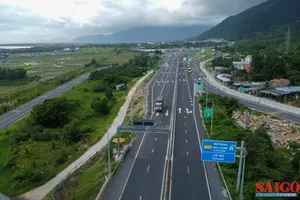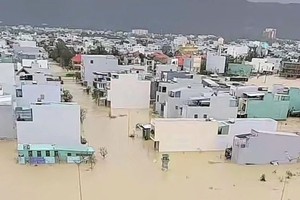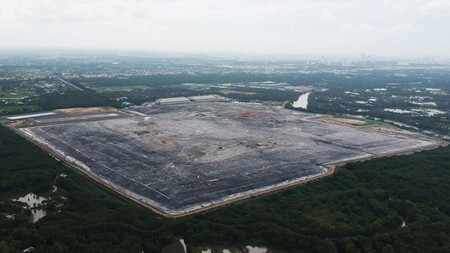
Approximately 70 percent of solid waste in Vietnam is now processed via burial. This not only costs a large surface area for landfills but also creates water and air pollution. It is these sites, practising solid waste burial or burning, that become a dangerous source of greenhouse gases like CO2, CH4, or N2O, leading to climate change.
A research by the Department of Science, Technology and Environment (under the Ministry of Construction) about greenhouse gases emission in solid waste treatment from 2014 – 2017 reveals that solid waste burial has created a larger amount of greenhouse gas than any other treatment methods. In fact, in 2017, the total volume of CO2 emission was 9.1 million tonnes, 8.1 million tonnes of which belonged to solid waste burial. Meanwhile, solid waste burning and composting release only 647 tonnes and 191 tonnes of CO2 respectively.
Estimates on the potential of energy harnessing from household waste in Vietnam show a processing capacity of 200 – 4,000 tonnes per day to create about 200MW. This means that if handled properly, solid waste burning is able to supply a large volume of electricity while reducing up to 60 percent of greenhouse gases compared to waste burial.
Ms. Luu Linh Huong from the Department of Science, Technology and Environment stated that to reach this potential, provinces in the nation need to invest more in upgrading waste treatment technologies, making better use of composting and incineration, ensuring sustainable socio-economic growth.
Besides popular solutions to raise the public’s awareness about environment protection and to improve waste treatment technologies, Vietnam is also interested in carbon pricing in hope of stopping the overuse or over-harnessing of energy to earn profit.
Dr. Truong Duc Tri, Deputy Director of the Department of Climate Change, shared that carbon pricing will bring new opportunities to investors and businesses when offering carbon credits. These credits will force manufacturers to either reduce exhaust fumes emission or to pay dearly for this release. In the long term, this method encourages the investment in clean development and technology upgrading, ultimately leading to low-carbon economic growth.
However, the selection of a suitable tool for carbon pricing in Vietnam is a key factor as it affects the sustainable development of the whole country and various communities, businesses there.
Thus, in order to successfully form and boost the carbon market via carbon pricing, along with a full report on possible impacts of the method on the society and economy, it is necessary to synchronously introduce a transparent examination system for greenhouse gases and greenhouse gas release monitoring in national and industrial scales. Also, a detailed route on greenhouse gas reduction in each industry must be announced.

